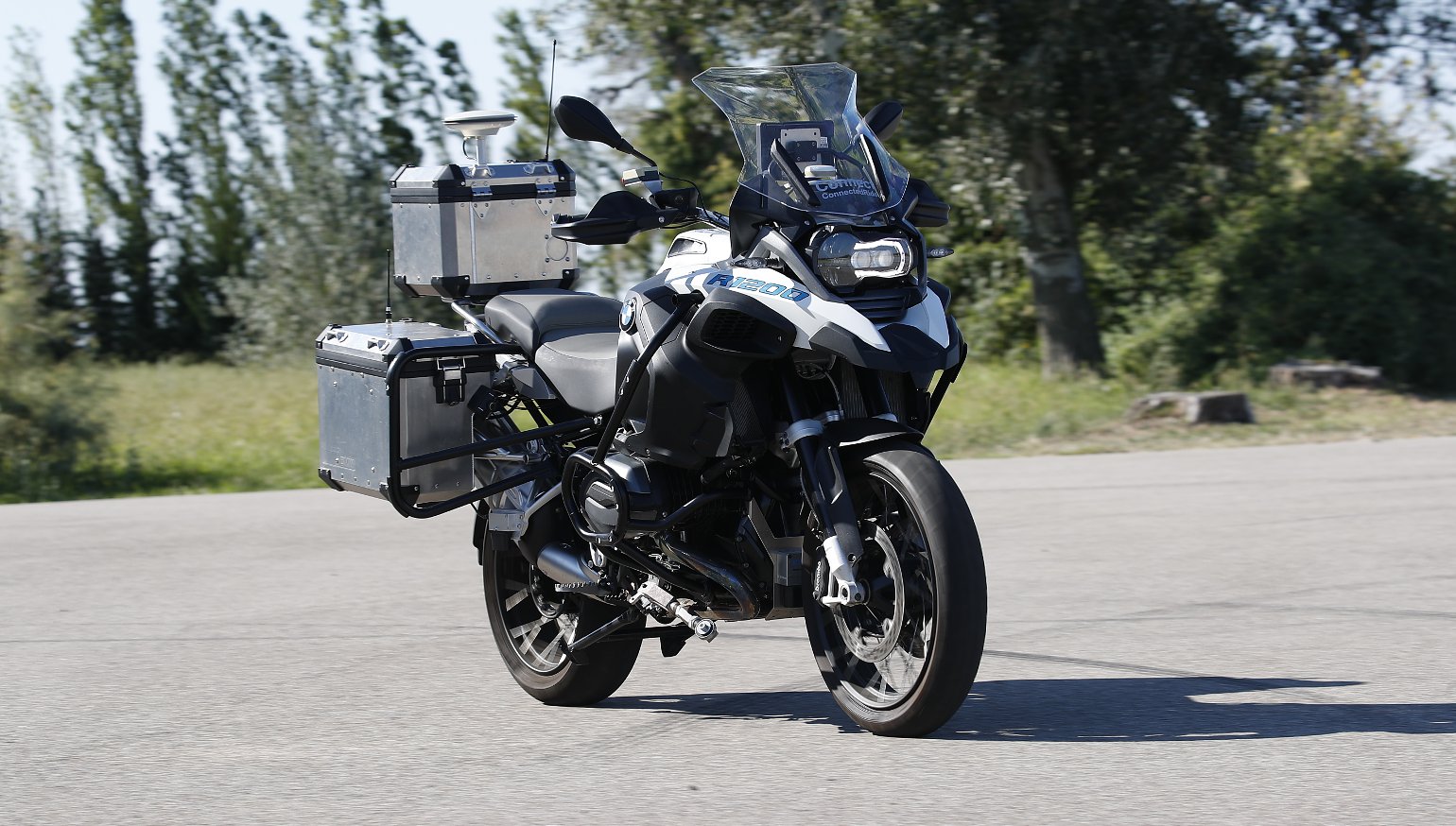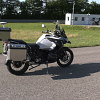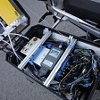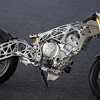I don’t know about you, but watching a motorcycle lap a track without a rider feels weird.
That’t exactly what BMW showed us with a video from BMW Motorrad Techday 2018: a riderless R 1200 GS doing laps around a track using their ConnectedRide technology. Watch for yourself.
Of course, the prototype also has value in its ability to perfectly repeat commands. BMW can now conduct better tests as they develop new bikes. Beyond that, project leader Stefan Hans explains, “The prototype helps us to expand our knowledge about the vehicle’s dynamics so that we can classify the rider’s behavior and determine if the future situation will become dangerous or not. If so, we can inform, warn, or intervene directly.”
Inform, warn, or intervene. I’m betting it’s no coincidence Hans presented them in that order. In fact, nowhere does BMW claim to be making an autopiloted production motorcycle that eliminates the need for rider input. According to BMW, “the underlying technology should serve as a platform for development of future systems and functions to make motorcycling even safer, more comfortable and increase the riding pleasure. The aim of the prototype is to gather additional knowledge with regards [to] driving dynamics in order to detect dangerous situations early on and thus support the driver with appropriate safety systems while turning at intersections or when braking suddenly, for example.”

I asked Mark Gardiner, Common Tread’s resident autonomous vehicles expert, for his take on the ghost GS. “In the developed world, we ride moto for fun. We're trying to engage with the vehicle, not disengage. That is not true elsewhere, and there certainly could be a market for an autonomous scooter in Asia.” I agree. (If you’re into autonomous vehicles and ride-assist technologies, be sure to check out Mark's HAV series and other articles.)
The obstacles facing development of fully or partially autonomous motorcycles aren’t limited to technological barriers. Motorcycling just isn’t ready to debate this technology on bikes. Come on, we still haven’t reached a conclusion on ABS! All eyes, motorcyclists’ and otherwise, will be on the auto industry as they show their attempts to the world in the near future.

Even with the most advanced rider assistance systems (ARAS), there will be no success for autonomous vehicles without trust. A 2016 collaborative study by MIT and the Singapore University of Technology and Design studied trust in situations where a human had to rely on machine aid to complete tasks. The researchers found that “participants tended to undertrust highly reliable aids and overtrust highly unreliable ones.” Misjudging a machine’s input in an experiment is one thing, but on the road, there’s no room for error. Amnon Shashua, CEO of driver assistance tech developer Mobileye, believes the public will only tolerate around 40 autonomous vehicle-related deaths per year in the United States. If manufacturers don't get it right, this ConnectedRide and related technologies aren't happening.
“I think you'll see a motorcycle that will let you do all the active riding you want — but which will 'step in' to save your ass if you appear to be failing to react to an obstacle in the road, or if you're running wide in a turn,” Mark guessed.
Projects like BMW’s exist because we ride in an imperfect world. Whether that means we make mistakes on our own, or we’re unable to react to some threat while riding, rider safety affects all of us. So far, rider aids like BMW’s do not.































 Riders Preferred Membership
Riders Preferred Membership






